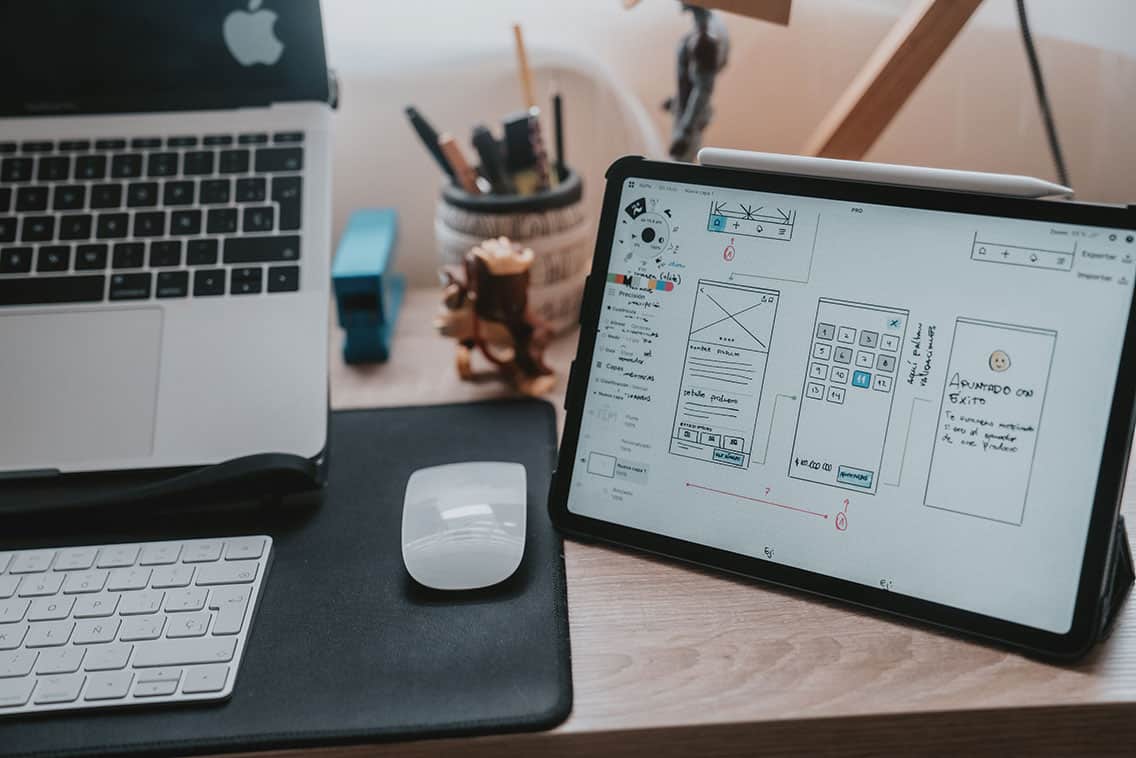Unlocking business value with User-Centred Design
8th November 2022 •
8th November 2022 •

Adopting an iterative User-Centred Design approach will save you time, money and improve customer experience.
At its core User-Centred Design (UCD) is acknowledging that the end-user is not you. It’s about understanding user needs and expectations and designing with them in mind. It’s testing and validating designs throughout the project with real users; preferably those who are the intended audience. User centred design principles are about putting your own preferences to one side and being more objective – using human behavioural data to inform the result.
Here at Torpedo, by understanding your customers, we design solutions that build trust and get repeat business. Everyone here takes a user centric-approach in everything they do – whether that’s our content and copy experts, video and motion designers, creative and client services, or developers and UI Designers.
Great UCD will find the sweet spot between customer needs and strategic business goals and design a solution that works for both. Critically, UCD is about consulting and testing with users from start to finish of a project as well as supporting continuous improvement once the service or product becomes an operational part of your organisation.
UCD places people at the heart of all business processes – driving compelling content and a delightful User Experience (UX). A famous example of this is ESPN.com. Their revenues increased by 35% after they incorporated suggestions from their community into their homepage redesign.
Source: Inside Design Blog.
Visit-to-lead conversions can be 400% higher on sites with a “superior user experience”.
Source: Forrester.
Seventy percent of enterprise CEOs see UCD as a competitive differentiator.
Source: Userzoom.
Only 55% of companies are currently conducting any user experience testing.
Source: Truelist.
UCD also helps sponsors, stakeholders and customers get a sense of progress towards meeting their needs and expectations. The incremental nature of the work delivers regular, meaningful value that fosters confidence in the project.
If you don’t adopt a UCD approach then there’s a risk that your customers:
As a result, they might leave your site, never to return. They could tell their colleagues about the shocking experience they’ve had and warn them not to bother – taking their business to one of your competitors. According to Web FX, 89% of consumers shop with a competitor after a poor user experience.
When it comes to designing websites, it all boils down to answering five core questions:
Let’s take each of these questions in turn and see how a user-centred approach can help.
Before we do anything else we really need to understand who the users are. These are the people who will engage with your product or service. What do they need? Why did they come to you? What do they expect from you?
You know your customer better than anyone. We’ll run discovery workshops with you so you can tell us everything we need to know about them. In addition to this, we like to talk directly to your customers and prospective customers to fill in the gaps and get any additional insights. Once we know all about the users, we can find out how well your offering meets their needs and expectations.

We’ve all visited websites and hit the back button because it’s not obvious that we’ll find what we need. After all, there are usually plenty of other options to peruse in the search results. Providing a strong scent of information through clear labelling, predictable and familiar navigation systems, and organisational structures gives comfort to people that they are in the right place.
At Torpedo, we offer card-sorting, tree testing, first-click and moderated usability testing. All three methods help us better understand user mental models. We learn how people group things, what they’d call those groups of things, and if the structure and labelling of your website or app makes sense. We use the data we collect to suggest changes that may better resonate with your customers and then we test again. At the end, you’ll be presented with easy-to-follow evidence of findings and recommendations for change.
Taking a user-centred approach means you’ll be better aligning with customer mental models and less likely to present confusing organisational structures to the outside world.

It’s all well and good helping people find what they are looking for with well-performing navigation bars, contextual links, and effective search engines. But if people don’t understand the destination content, it’s all been in vain. By clearly understanding user needs and expectations, as well as matching content to people’s mental models, we reassure, engage, and energise users into action.
At Torpedo we spend time understanding user needs and how they expect those needs to be met. We find out if your content makes sense to them by asking them to read though pages and watch videos during usability testing sessions. We then ask them to explain in their own words what they have understood. We can quickly determine if the message you want to convey is hitting the target. Spotting jargon and unfamiliar concepts and terminology, we work with you to better convey what you are trying to say.

Once your customers trust that your business is aligned with their needs and expectations, they’re likely to want to take action. However, there are still problems that could crop up which can put customers off at the last minute.
We can find out what’s not working and make suggestions for improvement. Sometimes it’s the simplest little detail that’s been overlooked – perhaps some rogue code that prevents a button from being clicked (or even appearing at all).
Through usability testing, first-click testing and true intent surveys we see first-hand how designs are failing users. We can then change and evolve the design until an effortless transaction takes place. With familiar and conventional layouts, labelling and feed-back responses, the customer has a much more pleasurable user experience, leading to repeat business.
Tech Jury reported that just five users are enough to find 85% of a website’s usability issues.

To answer this, we measure emotional response. We survey people to understand how they expect to feel before and after visiting your and your competitors’ websites and apps. Then we analyse the gap between expectation and reality.
You’ll also have an idea of how you expect people to feel – whether it’s excited, connected, energised or confident. We can test this and tell you if you’re off the mark and people are actually feeling anxious, drained, excluded or unsure. We’ll highlight the root causes and make recommendations for change to better align with your intent and your customer expectations.
75% of online users judge the credibility of a website based on its overall aesthetics.
Source: Inside Design Blog.
Our in-house UX Consultancy Team are highly experienced in user-centred research and design methodology. From pure user-research to UI design, content strategy, design, and development. Torpedo is a full-service agency for all your digital needs. Most recently we’ve had great successes for Autodesk, Epson and Panasonic that really show the true potential of UCD. If you have time, we would love to discuss opportunities with you – just reach out.
